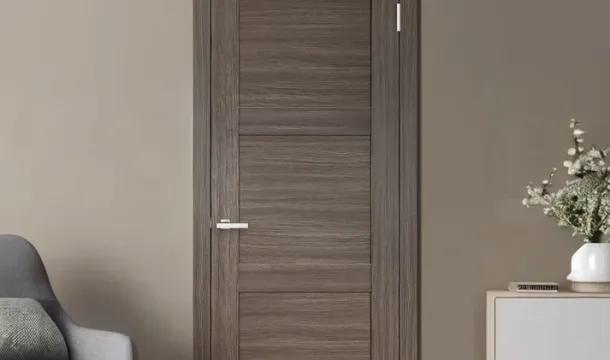Customizing Door Jambs for Non Standard Wall Thicknesses Guide
Popular Articles
Accurate measurement of wall thickness is the first step when modifying the frame to ensure proper alignment. Standard jambs rarely accommodate walls that deviate from typical dimensions, so tailored adjustment of the side and head jambs becomes necessary. Using a reliable tape measure, record both the finished wall thickness and any drywall or trim layers before ordering or cutting materials.
The installation process requires precise fitting of the jamb to avoid gaps or misalignment that can affect door operation. When dealing with thicker walls, consider extending the jamb depth by laminating additional wood or using adjustable jamb kits designed for this purpose. Attention to how the trim interfaces with the adjusted frame will maintain aesthetic consistency and functional integrity.
For proper fitting, verify that all components?€"frame, stop, and casing?€"are flush after installation. Minor discrepancies can be corrected on-site with shims or custom-cut pieces. Prioritize square corners and even reveal widths around the door to ensure smooth operation and visually balanced results throughout the opening.
Measuring Walls with Unconventional Dimensions
Accurate measurement of wall thickness is fundamental to ensure proper frame fitting and seamless installation. Use a high-precision caliper or a depth gauge to capture the exact width from the finished surface of one side to the other, including any existing trim or molding. Multiple measurements at several points along the opening?€"top, middle, and bottom?€"are necessary to identify variations that may require adjustment during modification.
When measuring, factor in the total thickness including drywall, plaster, and any applied finishes rather than relying on nominal stud dimensions. Record these values meticulously for comparison against standard jamb sizes. This process minimizes misalignment risks and reduces the need for extensive post-installation trimming or reworking.
Ensuring Proper Alignment and Trim Compatibility
After establishing precise thickness data, assess how the selected trim will interface with both the wall surface and frame edges. Measurement should extend beyond raw wall size to consider clearance space for shims or filler strips that facilitate alignment during fitting. If adjustments are anticipated, note where modification on either the frame or trim components will optimize installation efficiency.
Keep in mind that slight discrepancies between measured thickness and actual installed conditions can affect door operation and aesthetic appeal. Prioritize detailed documentation of measurements alongside planned modifications to maintain a smooth workflow and avoid unnecessary delays.
Selecting Proper Jamb Materials
Choose jamb components based on the frame?€(TM)s structural demands and the extent of modification required for fitting irregular thicknesses. Solid hardwood offers superior durability and easier adjustment during installation, especially when trimming is necessary to match unique wall depths. Softwoods like pine can be suitable for lighter frames but may require reinforcement if extensive thickness adaptation is involved.
Engineered wood products, such as MDF or HDF, provide smooth surfaces ideal for paint finishes and precise measurement adjustments. However, they tend to be less resilient under heavy stress or moisture exposure, which impacts long-term fitting stability. For walls with varying depth profiles, laminated veneer lumber (LVL) jambs offer consistent thickness with minimal warping risk during cutting and assembly.
When planning material selection, consider how each type responds to on-site adjustment techniques?€"routing, trimming, or shimming?€"to achieve a flush fit against uneven surfaces. Metals like aluminum or steel frames excel in commercial settings requiring slim profiles but demand specialized tools for measurement accuracy and modification.
Integrating prefinished trim that matches selected jamb materials simplifies alignment challenges arising from inconsistent wall measurements. Prioritize materials that maintain dimensional stability throughout installation phases to reduce corrective adjustments post-fitting.
Ultimately, selecting a jamb substrate hinges on balancing ease of modification with durability needs relative to the specific thickness variations encountered during the framing process.
Adjusting Jamb Width Accurately
Begin by precisely measuring the total thickness of the wall, including any drywall or paneling layers that will remain after installation. Use a reliable caliper or laser measure to capture consistent dimensions at multiple points along the frame opening to identify any irregularities.
For accurate fitting, subtract the combined thickness of finishing materials such as casing and trim from your initial measurement. This ensures the jamb width matches the structural gap without gaps or excessive pressure.
- Cutting the Jamb: When modifying the jamb width, employ a fine-toothed saw for clean edges. Make incremental cuts rather than removing large sections at once to maintain control over alignment.
- Test Fit and Alignment: After trimming, place the jamb within the frame opening and check for flush contact on both sides. Use shims strategically to correct minor misalignments before securing.
- Adjustment Verification: Confirm that all components?€"frame, stop, and hinge recesses?€"remain correctly positioned after modification. Misaligned parts can hinder door operation during installation.
- Sanding and Finishing: Smooth any rough cut edges with fine-grit sandpaper to ensure proper sealing and paint adhesion while preventing splintering during handling.
If thickness variations exceed standard tolerances, consider layering thin material strips behind the jamb for gradual adjustment rather than forcing a single large cut. This approach preserves structural integrity and improves long-term stability during fitting.
- Maintain consistent measurement tools throughout adjustment stages.
- Avoid over-trimming; it?€(TM)s easier to remove more material than to add it back.
- Check jamb squareness against a carpenter?€(TM)s square before final installation.
Installing Customized Door Jambs
Begin installation by verifying the precise measurement of the frame opening to ensure seamless fitting. Position the modified jamb carefully, maintaining consistent alignment with both the floor and ceiling planes. Use shims strategically behind the frame to correct any irregularities in thickness or uneven surfaces, preventing future warping or misalignment.
Fasten the jamb incrementally, securing screws through pre-drilled holes at regular intervals to stabilize the trim without causing deformation. Constantly check the vertical and horizontal plumb using a level during fastening; minor adjustment is easier before full tightening. Pay special attention to corners where precise joining of trim pieces affects overall aesthetics and structural integrity.
Address gaps between jamb and wall by applying flexible sealant or trim inserts that accommodate slight thickness variations while preserving clean lines. If modifications were made to accommodate unique wall dimensions, confirm that all adjustments maintain consistent clearance for door operation without binding or excessive play.
Final alignment involves testing door swing within the adjusted frame, making subtle jamb repositioning as necessary. Ensure that weatherstripping or additional insulation components fit snugly against altered surfaces. Proper installation guarantees long-term durability, smooth functionality, and a finished appearance tailored exactly to irregular construction parameters.
Sealing Gaps and Finishing
Ensure precise alignment between the frame and surrounding surfaces before addressing any gaps. Minor discrepancies in thickness or fitting can be resolved using flexible sealants specifically designed for trim applications, which accommodate slight movements without cracking. Apply a continuous bead of high-quality acrylic latex caulk along all junctions where the frame meets the wall substrate to prevent drafts and moisture intrusion.
When larger voids occur due to modification or uneven measurements, insert backer rods prior to sealing to maintain proper depth and reduce sealant usage. After curing, use paintable caulk to create a smooth transition that blends seamlessly with surrounding finishes. For enhanced durability, consider reinforcing corners with corner guards or trim extensions that match the jamb profile, ensuring consistent visual flow.
Final sanding of any filler used to correct surface irregularities should be performed carefully to preserve the intended width and alignment of the jamb edges. Avoid over-sanding as it compromises structural integrity and fitting accuracy. During installation completion, verify that all trim components are flush and uniformly spaced; any deviations can affect door operation and aesthetics.
Proper finishing techniques not only enhance appearance but also prolong longevity by protecting critical contact points from wear. Use touch-up paint or stain compatible with initial jamb materials after sealing has fully dried. This step reinforces protection against environmental factors while maintaining a cohesive look throughout the entire opening system.
Popular Articles

Soundproofing Interior Doors: Which Options Are Best for Your Home?

Choosing the Perfect Interior Doors for Your Canadian Home
